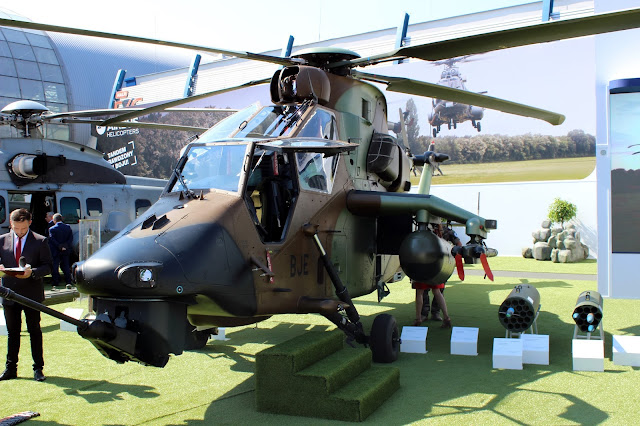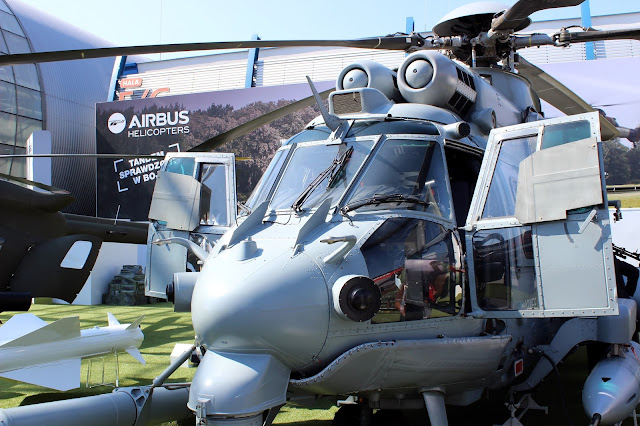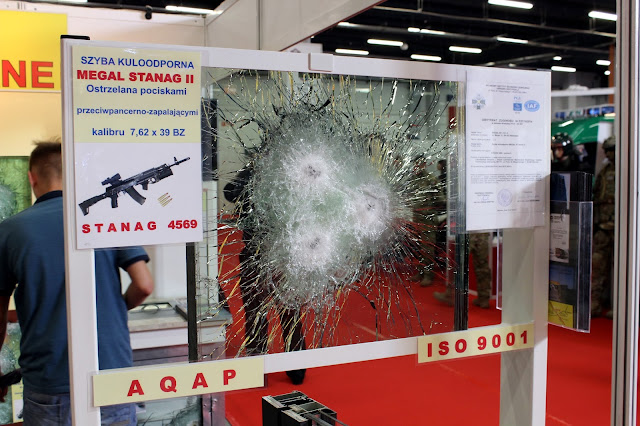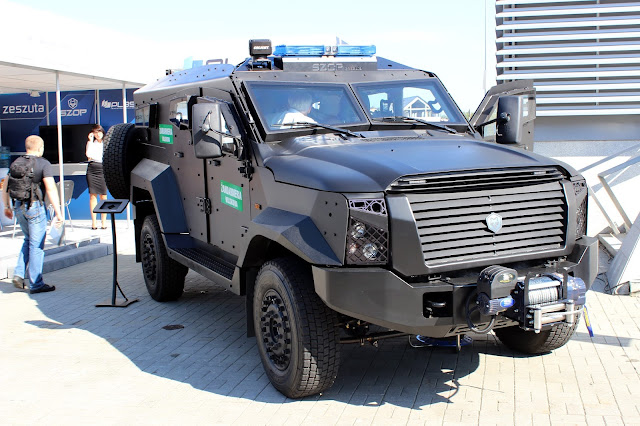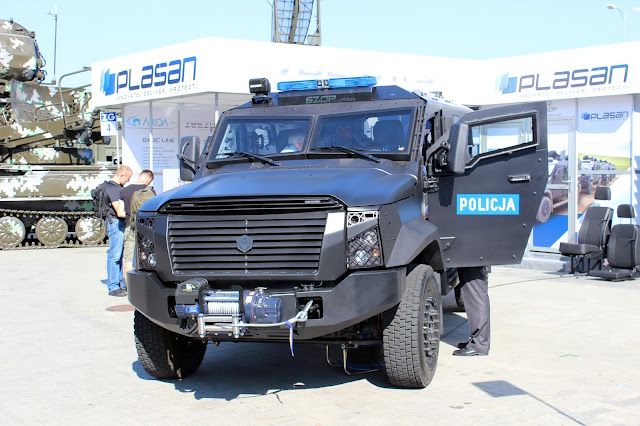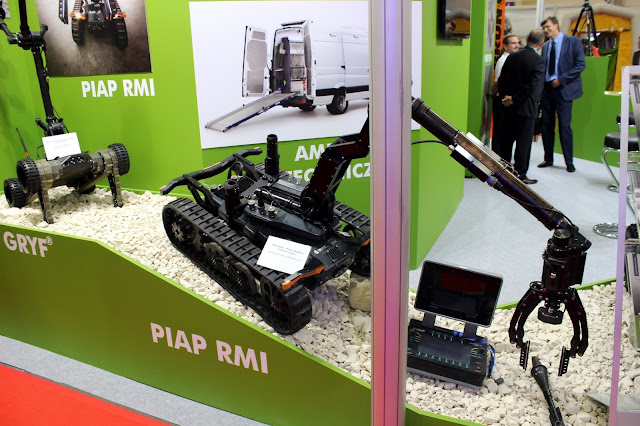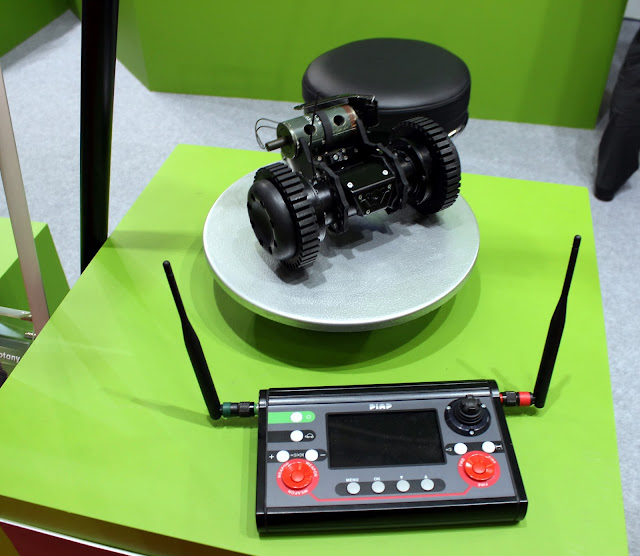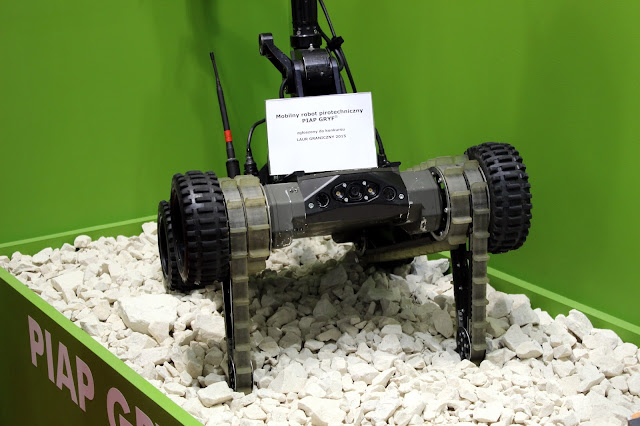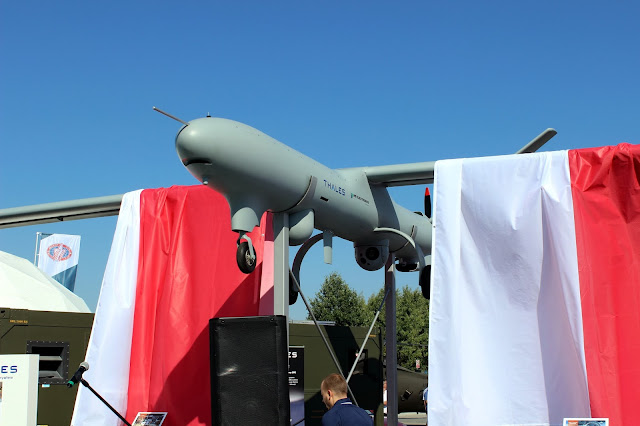The Operational Environment (OE) has taken a new form at the US Army's Joint Multinational Readiness Center (JMRC) for Exercise "Swift Response 15." Army Europe is leading a training exercise built around a multinational airborne joint forcible entry operation spanning four European nations and ending with a unique training event known as a Noncombatant Evacuation Operation (NEO) that was led by the German Armed Forces (Bundeswehr) and US Army Soldiers.
JMRC constantly updates and changes the OE depending on the needs of the rotational training units (RTU). During this exercise the planners at JMRC tweaked the OE of a traditional Decisive Action Training Environment (DATE) exercise and forced the RTU to conduct crisis response training as well as the traditional offense and defensive operations. As a critical piece of the new OE, Swift Response 15 featured a NEO, which is a deliberate and highly coordinated operation which is aimed to build a stronger, faster Alliance that can deal more effectively with humanitarian and security issues.
The mission for the final day of training required a battalion from the German Bundeswehr, partnered with the 127th Brigade Engineer Battalion, 82nd Airborne Division, to conduct a NEO during an emergency situation in the scenario town-set of Kibirly. Over one hundred civilian role-players were given acting roles to replicate a controlled extraction of civilians who were in harm's way. This is a scenario that has rarely been exercised in a multinational fashion, and demonstrates a skill-set that is very important to all the NATO Allies, as explained on the official NATO website where they promote democratic values and encourages consultation and cooperation on defense and security issues to build trust and, in the long run, prevent conflict.
Dr. James Derleth, the Interagency Advisor at JMRC said: "The number one mission in a NEO is to get the civilians out." This might sound like a simple task, but in a multinational and interagency operation, things get pretty complicated quickly." Derleth re-emphasizes how the military creates an OE like this, "We are directly working with our interagency partners from the State Department to execute a realistic operating training environment."
Derleth further stated, "This is absolutely crucial for real world training," referring to the ability to work with interagency partners like two members from the Frankfurt US consulate that were participating in the NEO planning and in the actual evacuation. "That's what we are providing here, a realistic operational environment with real interagency people. "
Creating this NEO scenario forced some of the traditional roles for JMRC personnel to change. Soldiers from the 1st Battalion, 4th Infantry Regiment --the permanent opposing forces (OPFOR) for training rotations here --have taken a new role for Swift Response 15. "We are taking a stand-back approach that is not necessarily combative in nature unless the training units are hostile to [us] first," explained Capt. Sean Navin, the Battle Captain for the OPFOR. "Normally at the end of a regular exercise things culminate into a final battle, but in the NEO operation we plan on being civilians on the battlefield that not necessarily add hostile actions to the scenario but actually a lot of white noise to see how the training unit is able to handle a large crowd and be able to know who to seek out and evacuate and who shouldn't [be evacuated]."
Planning new and diverse training operational environments like this is essential to strengthening relations between the military and the full spectrum of interagency organizations, as well as building trust and greater skills with multinational Allies and partners.
Between 27-28 August, a combined team of multinational aircraft from Germany, the Netherlands, and the United States, carrying equipment and personnel from their countries as well as Italy and Spain, executed an air-land operation to build combat power for the combined multinational at the Hohenfels Training area as part of Exercise "Swift Response 15."
Over two days, 43 separate aircraft landed at the short takeoff and landing, or STOL, strip in Hohenfels, Germany. To conduct this exercise, the aircraft would land on the STOL, rapidly unload their cargo, and within 20 minutes depart again for Ramstein Airbase in western Germany to reload and return to Hohenfels for another round.
To make these landings happen, the Combined Joint Task Force Devil, commanded by the 1st Brigade, 82nd Airborne Division, secured the STOL strip after landing in the Hohenburg Drop Zone the day before. Engineers, as part of this task force, also helped conduct a rapid air-strip repair to ensure the STOL was ready to receive aircraft.
Capt. Jeremy McNatt, a Air Force air mobility liaison officer and the landing zone safety officer on the STOL, said controlling this portion of the exercise was, "challenging but interesting and rewarding as well. Everyone does business just a little different, so communicating, translating ideas and thoughts is really half the battle. The whole point is joint operability."
In addition to the pilots and crew from all three nations landing at the STOL, ground security was provided by Italian and U.K. paratroopers, and airmen from the U.S. Air Force's 921st Contingency Operations Squadron provided command and control of all operations on the STOL.
To properly replicate the effect of air-landing, a multinational brigade's worth of equipment and personnel, several pieces of equipment from the training units were pre-positioned in Hohenfels, and moved to the area near the STOL strip. This allowed the logistics personnel on the ground to actually build the lodgement, while also allowing the multinational brigade to begin the next phases of the exercise.
JMRC constantly updates and changes the OE depending on the needs of the rotational training units (RTU). During this exercise the planners at JMRC tweaked the OE of a traditional Decisive Action Training Environment (DATE) exercise and forced the RTU to conduct crisis response training as well as the traditional offense and defensive operations. As a critical piece of the new OE, Swift Response 15 featured a NEO, which is a deliberate and highly coordinated operation which is aimed to build a stronger, faster Alliance that can deal more effectively with humanitarian and security issues.
The mission for the final day of training required a battalion from the German Bundeswehr, partnered with the 127th Brigade Engineer Battalion, 82nd Airborne Division, to conduct a NEO during an emergency situation in the scenario town-set of Kibirly. Over one hundred civilian role-players were given acting roles to replicate a controlled extraction of civilians who were in harm's way. This is a scenario that has rarely been exercised in a multinational fashion, and demonstrates a skill-set that is very important to all the NATO Allies, as explained on the official NATO website where they promote democratic values and encourages consultation and cooperation on defense and security issues to build trust and, in the long run, prevent conflict.
Dr. James Derleth, the Interagency Advisor at JMRC said: "The number one mission in a NEO is to get the civilians out." This might sound like a simple task, but in a multinational and interagency operation, things get pretty complicated quickly." Derleth re-emphasizes how the military creates an OE like this, "We are directly working with our interagency partners from the State Department to execute a realistic operating training environment."
Derleth further stated, "This is absolutely crucial for real world training," referring to the ability to work with interagency partners like two members from the Frankfurt US consulate that were participating in the NEO planning and in the actual evacuation. "That's what we are providing here, a realistic operational environment with real interagency people. "
Creating this NEO scenario forced some of the traditional roles for JMRC personnel to change. Soldiers from the 1st Battalion, 4th Infantry Regiment --the permanent opposing forces (OPFOR) for training rotations here --have taken a new role for Swift Response 15. "We are taking a stand-back approach that is not necessarily combative in nature unless the training units are hostile to [us] first," explained Capt. Sean Navin, the Battle Captain for the OPFOR. "Normally at the end of a regular exercise things culminate into a final battle, but in the NEO operation we plan on being civilians on the battlefield that not necessarily add hostile actions to the scenario but actually a lot of white noise to see how the training unit is able to handle a large crowd and be able to know who to seek out and evacuate and who shouldn't [be evacuated]."
Planning new and diverse training operational environments like this is essential to strengthening relations between the military and the full spectrum of interagency organizations, as well as building trust and greater skills with multinational Allies and partners.
 |
| An Italian paratrooper checks on his soldiers during a joint forcible entry exercise that is a part of Swift Response 15 on Hohenburg drop zone in Hohenfels, Germany, 26 August. |
Between 27-28 August, a combined team of multinational aircraft from Germany, the Netherlands, and the United States, carrying equipment and personnel from their countries as well as Italy and Spain, executed an air-land operation to build combat power for the combined multinational at the Hohenfels Training area as part of Exercise "Swift Response 15."
Over two days, 43 separate aircraft landed at the short takeoff and landing, or STOL, strip in Hohenfels, Germany. To conduct this exercise, the aircraft would land on the STOL, rapidly unload their cargo, and within 20 minutes depart again for Ramstein Airbase in western Germany to reload and return to Hohenfels for another round.
 |
| An air traffic controller from the United Kingdom helps land a C-130 "Hercules" on Hohenfels Training Area during Exercise "Swift Response 15," 25 August. |
To make these landings happen, the Combined Joint Task Force Devil, commanded by the 1st Brigade, 82nd Airborne Division, secured the STOL strip after landing in the Hohenburg Drop Zone the day before. Engineers, as part of this task force, also helped conduct a rapid air-strip repair to ensure the STOL was ready to receive aircraft.
Capt. Jeremy McNatt, a Air Force air mobility liaison officer and the landing zone safety officer on the STOL, said controlling this portion of the exercise was, "challenging but interesting and rewarding as well. Everyone does business just a little different, so communicating, translating ideas and thoughts is really half the battle. The whole point is joint operability."
In addition to the pilots and crew from all three nations landing at the STOL, ground security was provided by Italian and U.K. paratroopers, and airmen from the U.S. Air Force's 921st Contingency Operations Squadron provided command and control of all operations on the STOL.
To properly replicate the effect of air-landing, a multinational brigade's worth of equipment and personnel, several pieces of equipment from the training units were pre-positioned in Hohenfels, and moved to the area near the STOL strip. This allowed the logistics personnel on the ground to actually build the lodgement, while also allowing the multinational brigade to begin the next phases of the exercise.


.jpg)

















